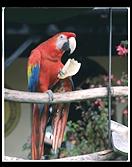
Mamiya 7 II
by Philip Greenspun; created 2000
Site Home : Photography : Mamiya 7 II
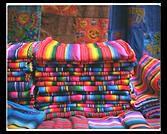
About to leave for a three week trip to Australia, I scanned the 20 cameras in my closet. The 20-lens Canon EOS system beckoned. It is flexible, reasonably small and lightweight, and fast thanks to automated exposure, focus, and film advance. However, the last few trips I'd taken with the EOS it transpired that the 50/1.4 lens stayed on the camera 95% of the time. The extra 19 lenses stayed at home or in the suitcase. If one is going out among the streets with a camera and wants a normal perspective, the 6x7 cm negative produced by a Mamiya 7 is a much more satisfying result. Because the rangefinder design does not require a mirror or prism, the overall weight of the Mamiya and 80/4 lens is similar to that of an EOS-3 with 50/1.4 lens. Same weight, 4.5X larger negative.
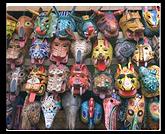
What exactly is a Mamiya 7?
The Mamiya 7 is a lightweight rangefinder 6x7-format camera with interchangeable lenses. It is probably the only 6x7 camera with interchangeable lenses that is practical for travel or street photography.
After a few rolls, I fell into a rhythm with this camera such that I had a higher successful image rate than with the Canon EOS system that I've used regularly for six years. The key to the Mamiya's photographer-friendliness is that the camera's engineers must have read About Face , where Alan Cooper reminds programmers "No matter how cool your interface, it would be better if there were less of it." There aren't that many controls on the Mamiya 7 and it is therefore easy to keep in one's mind the fact that, for example, exposure compensation has been set to +1 f-stop. Because one's mind isn't occupied with a raft of autofocus settings, it is easy to remember to remove the lens cap before pushing the shutter release.
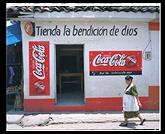
The only thing of which you must be careful is that you have the 120/220 pressure plate set properly. One twist sets both the pressure plate and the film counter appropriately and a small window on the camera back confirms the setting externally. However, it is best to stick with either 120 (10 exposures per roll) or 220 film (20 exposures per roll) for an entire trip so that you don't have to worry about finishing a roll only to find out that the pressure plate was improperly set (resulting in unsharp images at wide apertures).
Our open-source software company was expanding into 100,000 square feet of office space worldwide during the Year 2000. Even a 20x24 enlargement will tend to get lost in a large office and it is difficult to make an acceptable quality enlargement from 35mm even at 20x24 much less the 40x40 and 40x50 sizes that will hold a visitor's attention in an 8,000 square foot floor office. I'd been printing mostly ancient images from a Rollei 6000 system, Fuji 617 (panoramics do well above cubicle walls), and Linhof 4x5 field camera. I'd planned a trip to Guatemala to teach a short course on Web application design and wanted to create some wall-covering images while down there. The only camera on the preceding list that I'd consider taking on a casual trip is the Fuji 617.
Right before leaving, I borrowed a Mamiya 7 II system including the 43mm superwide, 80mm normal, and 150mm portrait lenses. The photos that you see illustrating this article were all taken in Guatemala.
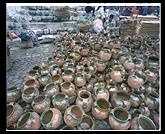
Background: This is not a camera that you can just grab and go. Before you change lenses you must turn a dial on the bottom of the camera to close a light curtain. After fitting the new lens and composing your picture, you invariably will have forgotten to press the little release button to open the light curtain again. The camera has electronic interlocks to prevent you from wasting a roll with blank frames but the bottom line is that people who haven't read the manual won't get very far with this camera.
What comes out of the camera? Images that are sharp, high-contrast, and distortion-free.
As with the Mamiya 6, the rangefinder is a joy to operate. The central area is big and bright, vastly better than the Fuji rangefinders and even a little better than the Leica M-series cameras.
With a rangefinder camera, what you see is not what you get. The Mamiya 7's viewfinder is wide enough to show you roughly what the 65mm lens captures. Bright lines appear that are calibrated to the lens that you've mounted (up to 150mm) and that shift down and to the right as you focus closer (automatic parallax correction).
Framing remains a challenge, however. At infinity, the film captures about 20%
more than what is within the bright lines (i.e., you might get a street sign that
will have to be cropped out in the lab). Only when the lens is focussed close do
the bright lines correspond to what is captured on film.
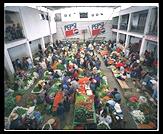
With the 43mm lens, taking a picture requires the following steps:
This is a difficult camera to use with slide film in metered-manual mode:
It might be more effective to work with the auto-exposure lock and the exposure compensation dial. Then the camera will set the shutter speed to within 1/6th of an f-stop. I was able to get consistently good slide exposures working in this manner on a 7-week trip to Australia (which started out as a 3-week trip; see my decompression illness story for details).
The Mamiya 7 is a great camera. If you need higher image quality than 35mm, some flexibility as to lens choice, and portability, the Mamiya 7 is a faithful companion.
With the 150mm lens...
(note the armadillo being grilled above)
With the 43mm lens...
In beautiful Antigua, Guatemala...
The cemetery at "Chichi":
The market at Chichi:
The Maya city of Tikal...
Let's shift gears now, back to Cape Cod, Massachusetts. This has been the subject of an earlier photo.net exhibit but a new house in Chatham and the newly arrived Mamiya created an opportunity to take some more snapshots. First, let's look at the views from the house and deck:
Now the interior, mostly with the 43mm lens...
Text and photos copyright 2000 Philip Greenspun.